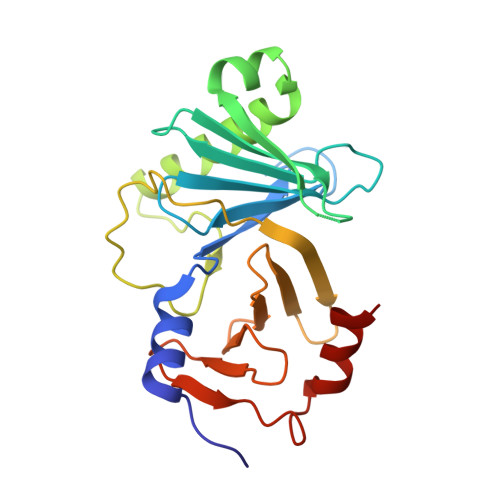Divergent polo boxes in KKT2 bind KKT1 to initiate the kinetochore assembly cascade in Trypanosoma brucei.
Ishii, M., Ludzia, P., Marciano, G., Allen, W., Nerusheva, O.O., Akiyoshi, B.(2022) Mol Biol Cell 33: ar143-ar143
- PubMed: 36129769
- DOI: https://doi.org/10.1091/mbc.E22-07-0269-T
- Primary Citation of Related Structures:
8A0J, 8A0K - PubMed Abstract:
Chromosome segregation requires assembly of the macromolecular kinetochore complex onto centromeric DNA. While most eukaryotes have canonical kinetochore proteins that are widely conserved among eukaryotes, evolutionarily divergent kinetoplastids have a unique set of kinetochore proteins. Little is known about the mechanism of kinetochore assembly in kinetoplastids. Here we characterize two homologous kinetoplastid kinetochore proteins, KKT2 and KKT3, that constitutively localize at centromeres. They have three domains that are highly conserved among kinetoplastids: an N-terminal kinase domain of unknown function, the centromere localization domain in the middle, and the C-terminal domain that has weak similarity to polo boxes of Polo-like kinases. We show that the kinase activity of KKT2 is essential for accurate chromosome segregation, while that of KKT3 is dispensable for cell growth in Trypanosoma brucei . Crystal structures of their divergent polo boxes reveal differences between KKT2 and KKT3. We also show that the divergent polo boxes of KKT3 are sufficient to recruit KKT2 in trypanosomes. Furthermore, we demonstrate that the divergent polo boxes of KKT2 interact directly with KKT1 and that KKT1 interacts with KKT6. These results show that the divergent polo boxes of KKT2 and KKT3 are protein-protein interaction domains that initiate kinetochore assembly in T. brucei .
- Department of Biochemistry, University of Oxford, Oxford, OX1 3QU, UK.
Organizational Affiliation:

















